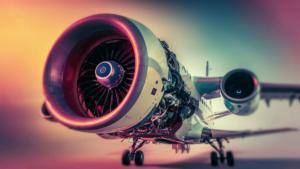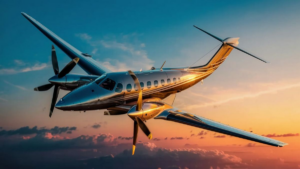When it comes to long-range travel, single-engine aircraft have traditionally been viewed as less capable than their multi-engine counterparts. However, advancements in technology have led to the development of single-engine aircraft with impressive range capabilities. In this article, we explore some of the longest-range single-engine aircraft currently available in the market.
The Advantages of Single Engine Aircraft
Single-engine aircraft offer several advantages over their multi-engine counterparts. They are typically lighter, more fuel-efficient, and easier to maintain. Additionally, they often have lower operating costs, making them an attractive option for both recreational and commercial pilots.
The Longest Range Single Engine Aircraft
One notable contender in the realm of single-engine aircraft with exceptional range is the Daher TBM 930. Powered by a Pratt & Whitney PT6A-66D turboprop engine, the TBM 930 boasts a maximum range of over 1,700 nautical miles (3,150 kilometers) with a maximum cruising speed of 330 knots (611 kilometers per hour).
Another aircraft renowned for its long-range capabilities is the Pilatus PC-12 NG. Equipped with a Pratt & Whitney PT6A-67P turboprop engine, the PC-12 NG can travel up to 1,845 nautical miles (3,417 kilometers) at a cruising speed of 280 knots (519 kilometers per hour).
The Cirrus SR22 is yet another single-engine aircraft known for its impressive range. With a Continental IO-550-N engine, the SR22 has a maximum range of approximately 1,000 nautical miles (1,852 kilometers) and a cruising speed of 183 knots (339 kilometers per hour).
Factors Affecting Range
While these aircraft offer impressive range capabilities, it’s essential to consider various factors that can affect their performance. These include payload, weather conditions, altitude, and speed. Pilots must carefully plan their flights and take these factors into account to ensure they can reach their destinations safely and efficiently.
The Future of Single Engine Aircraft
As technology continues to advance, we can expect to see even more improvements in the range and performance of single-engine aircraft. Manufacturers are constantly innovating and developing new technologies to enhance the capabilities of these aircraft, making them an increasingly viable option for long-distance travel.
In conclusion, while single-engine aircraft may have been traditionally viewed as limited in terms of range, modern advancements have transformed them into capable long-range performers. With the right combination of technology, design, and engineering, these aircraft offer a compelling option for pilots seeking to travel long distances efficiently and economically.
Enhanced Safety Features
In recent years, single-engine aircraft have seen significant advancements in safety features. Manufacturers are incorporating state-of-the-art avionics systems, including advanced autopilot features, terrain awareness and warning systems (TAWS), and traffic collision avoidance systems (TCAS). These enhancements not only improve the safety of single-engine aircraft but also provide pilots with additional tools to navigate challenging conditions.
Autonomous Capabilities
The future of single-engine aircraft might involve greater integration of autonomous technologies. While fully autonomous flights may still be a ways off due to regulatory and safety concerns, we’re seeing the gradual introduction of semi-autonomous features that assist pilots in various phases of flight, such as takeoff, landing, and navigation. These advancements could further enhance the efficiency and safety of single-engine aircraft.
Frequently Asked Questions
| Question | Answer |
|---|---|
| Are single-engine aircraft as safe as multi-engine aircraft? | Single-engine aircraft undergo rigorous safety testing and are equipped with advanced safety features, making them comparable in safety to multi-engine aircraft under most conditions. |
| What factors should I consider when planning a long-range flight in a single-engine aircraft? | When planning a long-range flight, consider factors such as payload, weather conditions, altitude, speed, and available fuel stops along the route to ensure a safe and efficient journey. |
| Can single-engine aircraft fly over oceans or remote areas? | Single-engine aircraft can fly over oceans or remote areas, but pilots must carefully plan their routes, considering factors such as distance from land, fuel availability, and emergency procedures in case of engine failure. |
See also:






